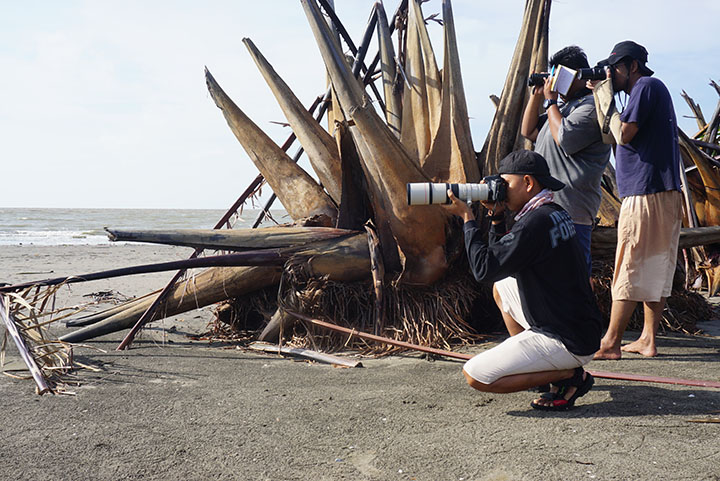Berbak Sembilang national park is located in the coast of the province of South Sumatra, Indonesia. This national park has a large area of 2,051 km². The boundaries of the Berbak National Park area are as follows - the East borders with the villages that are included in the Sadu District area, on the West borders with the Berbak River, the Northern Taman Hutan Raya (Tahura) Orang Kayo Hitam and Hutan Lindung gambut (HLG) Borders with villages in Sadu district area, the south borders with Sembilang National Park, South Sumatra Province. Berbak Sembilang National Park is a habitat for Sumateran tigers, Asian elephants, Asian tapirs, siamang, golden cats, estuarine crocodiles, Sembilang fish, and various species of birds. Sembilang National Park consists of peat swamp forest, freshwater swamp forest and riparian forest in South Sumatera Province.
Migratory birds from Siberia can be seen in this park with a peak migration time being in October. Thousands of birds flying in can even be heard through the roar of the Bangka Strait. Other bird species that inhabit this park include the Asian Dowitcher (Limnodromus semipalmatus), See Greenshank (Guttifer pseudototanus), White Eastern Pelican (Pelecanus onocrotalus), Bangau Susu (Mycteria cinerea), Stork of Lower Aide (Leptoptilos javanicus), and White-Black Winged Three Goods (Chlidonias leucoptera). In the west side, the park borders with berbak national in jambi province. Berbak Sembilang National Park is known as a stopover sight for migratory birds from various parts of the world. At least 213 bird species have been recorded in the Sembilang National Park area including many of the precarious species of residents and more than 25 migratory water bird species. The total number of coastal waterbirds that utilize the mud plain in this area is estimated to be around 0.5-1 million. That is the basis for observing migratory birds in the area.
This event dedicated to WMBD 2019 celebration is called Birdwatching in Berbak Sembilang National Park and will help raise public awareness about plastic pollution. The agenda covers four days. On the first day, the departure is planned from Indralaya, Ogan Ilir at 08.00 AM. Then the journey continues using a speedboat because the destination cannot be reached from the land route. After arriving in the location, birdwatching activities will be held until the sun sets. Observation of the bird migration will continue on the second day in the Bentet islands and the Inner Canal starting from the morning until late afternoon. The activity will be guided by foresters working in the national park area. On the third day, the event will continue with social service activities. This social activity targeted at 30-50 people will focus on socialization and awareness-raising on plastic waste, namely the importance of not disposing plastic waste into the sea because it threatens habitats of migratory birds and other animals in the national park. On the 4th day, birdwatching activities will continue. We hope that this activity will be carried out successfully due to the importance of monitoring migratory birds to record the population of migratory bird species from year to year. In addition, this activity will help communicate the dangers of plastic waste to ecosystems and animals, especially migratory birds.

